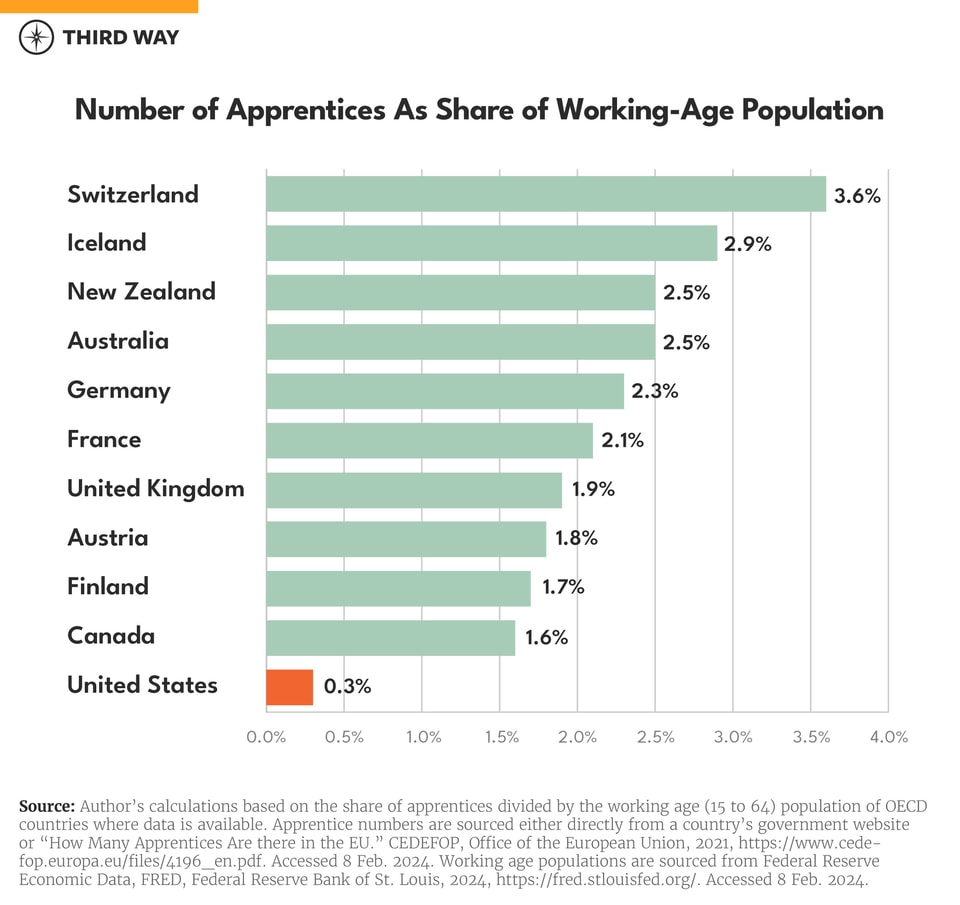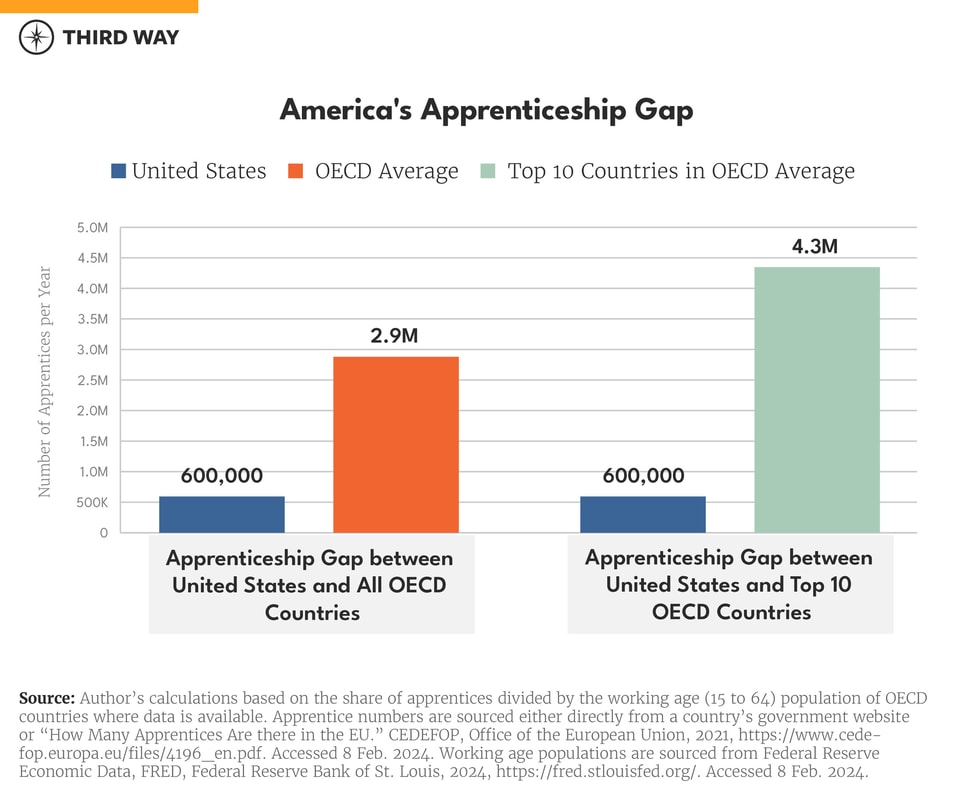Memo Published February 23, 2024 · 2 minute read
America’s Apprenticeship Gap in Two Charts
Curran McSwigan

By the end of the decade, three out of four jobs will require training beyond a high school diploma.1 Yet, based on our current training trends, millions of those jobs could sit vacant due to a lack of skilled workers.2
It doesn’t have to be this way. As more jobs require more training, apprenticeships—where people earn a living as they learn skills in their field—have the potential to boost millions of workers into high-quality careers. The problem is, right now, apprenticeships are too often an afterthought in the United States.
How Behind Are We?
In 2022, there were 600,000 Americans in registered apprenticeship programs—a miniscule 0.3% of the US working-age population.3 During the same year, the share of working-age adults in apprenticeship programs was over five times higher in Canada, seven times higher in Germany, and a staggering 12 times higher in Switzerland.4

Across other economies, apprenticeship programs are deeply engrained into the post-secondary system. Half of all Germans between the ages of 18 and 24 are apprentices, but in the United States, only 2% of young adults are.5 The prevalence of apprenticeships in other nations isn’t a fluke—it’s the result of significant policy changes over many years. Other countries have made the long-term commitment to expand the apprenticeship model into new sectors, make programs easier for employers, and streamline bureaucracy.6
How Far We Have to Go
To be on par with other OECD countries, the United States needs to go from the current 600,000 people in registered apprenticeships per year to over 2.8 million. And to get to the level of the top 10 performing OECD countries—which includes Germany, Canada, the United Kingdom, among others—we need to boost that number to 4.3 million.7

The United States is facing a huge apprenticeship gap, which will have real economic consequences. But that doesn’t have to be our destiny. Now is the time for a national apprenticeship system as robust and ubiquitous as our public university system. That will require investing in making the system easier to use for employers and workers, elevating apprenticeship intermediaries that bring workers together with educators and businesses, providing supportive services to help apprentices finish training, and integrating apprenticeships into existing educational systems and new industries. We cannot stall any longer—now is the time to act.
